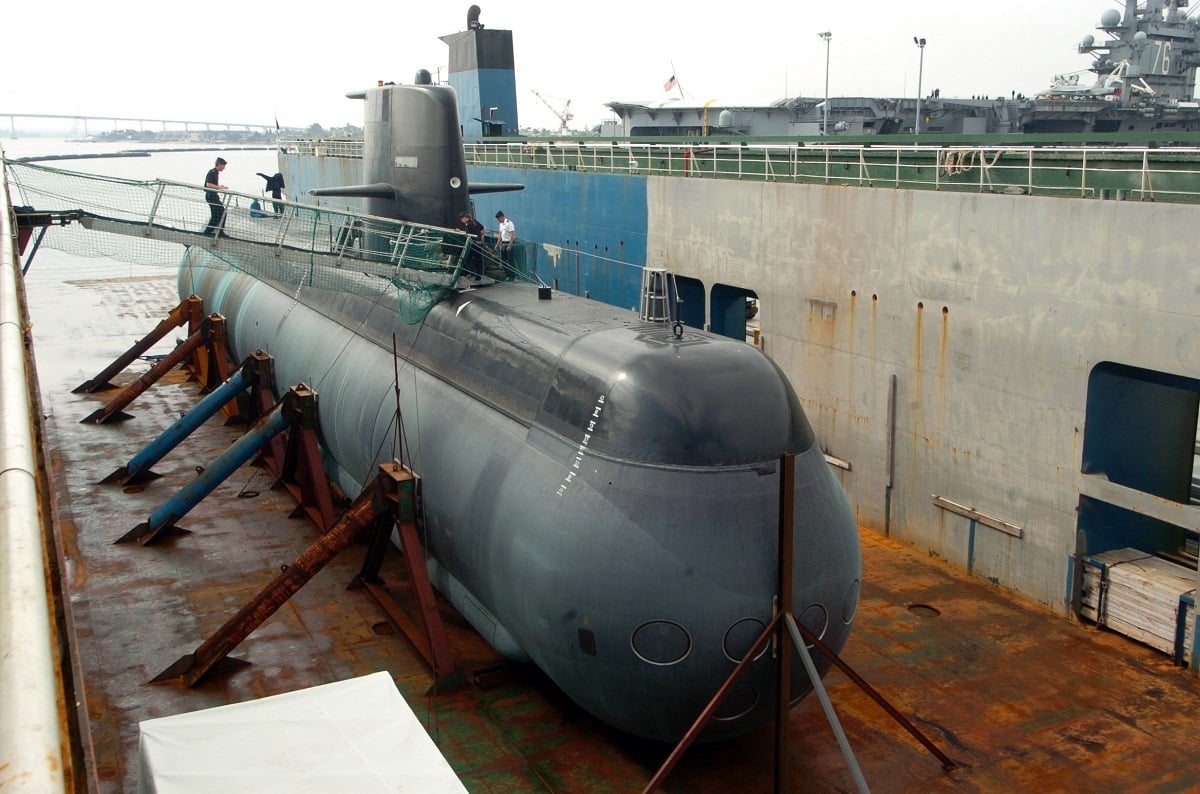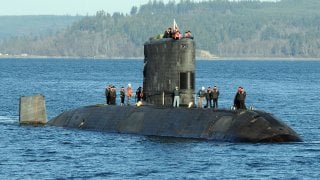Canada Wants 12 New Stealth 'AIP' Submarines: Russia Won't Like It
Canada is ramping up its Arctic defense capabilities in response to growing Russian influence in the region. The country plans to acquire a dozen conventionally powered, under-ice-capable submarines to counter the Russian presence, marking a significant modernization of its military.
Summary and Key Points: Canada is ramping up its Arctic defense capabilities in response to growing Russian influence in the region. The country plans to acquire a dozen conventionally powered, under-ice-capable submarines to counter the Russian presence, marking a significant modernization of its military.
-These submarines will feature air-independent propulsion (AIP) systems, allowing them to remain submerged under ice for extended periods and operate more quietly than Canada's current aging Victoria-class fleet.
-This move aims to shift the balance of power in the Arctic, a region rich in resources and potential new shipping routes, away from Russia and toward North America.
Canada Ups Its Arctic Game with New Submarine Fleet
Canada is recognizing that, after years of benign neglect, they are losing the High North—their proverbial backyard—to the growing Russian menace up there. Back in 2008, the Russian government began its shift toward dominating the Arctic as a bid to make itself more self-reliant and dominant in the global commodities markets (the Arctic is home to some of the most valuable untapped resources in the world).
What’s more, the Arctic could become home to the world’s most profitable shipping route, which would serve as a more cost-effective alternative to the Suez Canal.
So, for Russia, dominating the Arctic is a key element to completing what the Putinist regime there believes to be his great, post-Cold War restoration of Russian greatness.
To counter this highly effective Russian strategy of dominating the Arctic, Ottawa has announced what they are calling “Our North, Strong and Free.” To accomplish this herculean task, Canada plans to procure a dozen “conventionally powered, under-ice-capable submarines,” as Peter Suciu announced in these pages last week. According to Suciu’s reportage, these boats will “covertly detect and deter maritime threats, control [Canada’s] maritime approaches, and project power as well as striking capability into the region.”
A Necessary Modernization Campaign
This represents a significant modernization campaign undertaken by Prime Minister Justin Trudeau's government, which is not normally associated with hawkishness.
But it also presents a necessary investment in Canada’s future and the prolonged security of North America from a rising threat in the relatively undefended and underdeveloped Arctic region. Besides, like the rest of the Canadian military, the Royal Canadian Navy (RCN) desperately needs modernization.
The United States Navy’s submarine force is stretched, and the Canadian Navy’s sub fleet is virtually nonexistent. Evoking Suciu’s reporting once more, Canada has four Victoria-class submarines, with three submarines based in the Pacific Ocean and another in the Atlantic. The Russians don’t think these older submarines pose much of a threat. But the dozen non-nuclear ones Canada wants to buy do.
And that those submarines would be based on countering perceived Russian threats in the Arctic is doubly concerning to Moscow.
Understanding the Technical Side
The submarines in question will have an air-independent propulsion (AIP) system allowing for submarines to remain under the ice and will be far quieter than the current aging fleet of Canada’s Victoria-class submarines. Moscow’s analysts worry that the new non-nuclear Canadian subs will possess high-quality sonar systems and advanced torpedoes that might give the RCN tactical advantages over Russian submarines they may encounter under the Arctic ice that Canada’s current submarine force lacks.
Nuclear submarines have many advantages over conventionally powered submarines, notably in terms of range. But conventionally powered submarines, while they may not have the range or the capability to stay submerged as long as nuclear-powered subs can, conventionally powered subs have proven to be adept at getting the better of nuclear-powered systems. As for replacing the aging Victoria-class submarines, it’s a smart move by Canada.

Canada’s Victoria-class subs were built in the 1980s by the British.
There’s a, if you’ll pardon the expression, boatload of problems in terms of maintaining these older submarines. Because of the maintenance woes (and the fact that Ottawa has allowed its commitment to adequately funding its national defense to wane over the decades) Canada’s navy was seriously limited at the strategic level. This new purchase will fundamentally alter the balance of power in the High North away from Team Russia and toward Team North America.
It's a smart move. The race for the Arctic is one of the least-well-reported stories in the world right now. But the fate of the Arctic, who ultimately controls this important region, could define the way things turn out in North America for the next century.
Author Experience and Expertise: Brandon J. Weichert
Brandon J. Weichert, a National Interest national security analyst, is a former Congressional staffer and geopolitical analyst who is a contributor at The Washington Times, the Asia Times, and The-Pipeline. He is the author of Winning Space: How America Remains a Superpower, Biohacked: China’s Race to Control Life, and The Shadow War: Iran’s Quest for Supremacy. His next book, A Disaster of Our Own Making: How the West Lost Ukraine, is due October 22 from Encounter Books. Weichert can be followed via Twitter @WeTheBrandon.
All images are Creative Commons or Shutterstock.
From the Vault
Russia Freaked Out: Why the U.S. Navy 'Unretired' the Iowa-Class Battleships
Battleship vs. Battlecruiser: Iowa-Class vs. Russia's Kirov-Class (Who Wins?)


